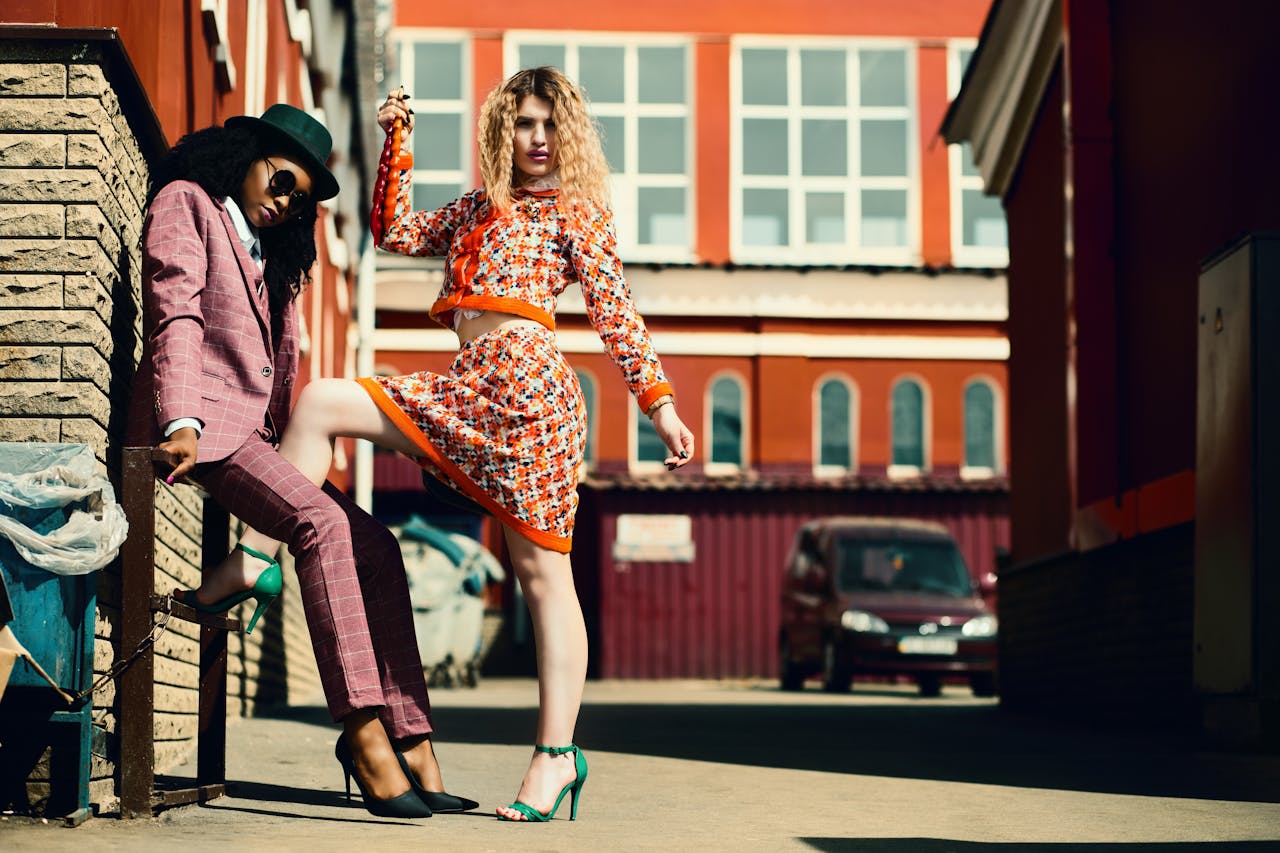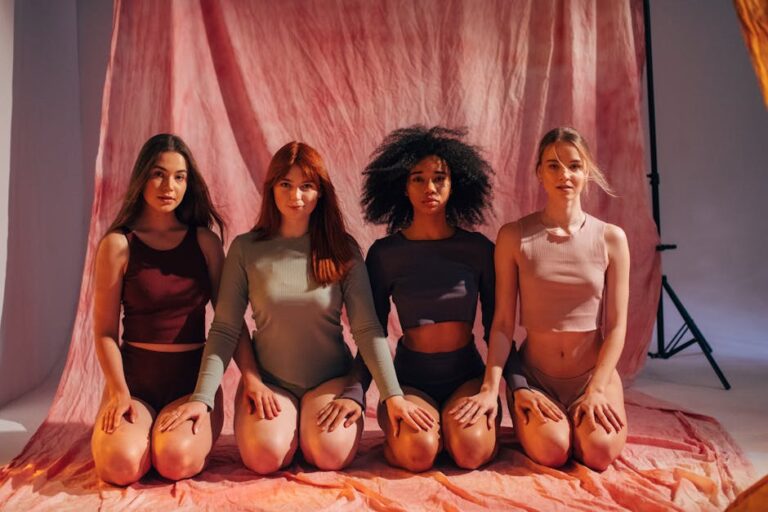Table of Contents
The fashion world always spins fast; it changes quickly. By 2025, people still talk a lot about ZARA and H&M. Both these big names offer clothes for the masses, but they do things quite differently. It’s not just about what they sell, but how they sell it too.
For years, ZARA has been known for getting new styles out fast. They watch what’s hot on runways and in high fashion, then make similar items quickly. This means their stores often have new clothes every few weeks. shoppers love this quick turnaround; it keeps things fresh.
H&M, on the other hand, often focuses on basic, everyday wear. They also jump on trends, but maybe not as aggressively as ZARA. H&M tries to give good value for money. Their clothes tend to be a bit more relaxed and less about the latest, fleeting trend.
ZARA’s clothes sometimes feel a step up in terms of quality or design detail. The fabrics might not always be the best, but the look often seems more expensive. I’ve noticed people often pick ZARA when they want to make a statement. It’s about looking current, right now.
H&M is often cheaper than ZARA, which is a big draw for many. They have sales all the time, making their clothes even more affordable. For basics like t-shirts, jeans, or simple sweaters, H&M is usually the go-to place. It’s good for building a foundational wardrobe.
Fast Fashion’s Footprint: A Look at Sustainability Efforts
Sustainability became a huge deal in fashion over the past few years. Both ZARA and H&M are trying to do better. They both get a lot of pressure from customers and groups. It’s a tough path for huge companies that rely on making lots of clothes.
ZARA talks a lot about its “Join Life” collection, which uses more sustainable materials. They also have programs for recycling old clothes. What’s interesting is how they manage their supply chain; it’s mostly in Europe. This helps them react fast and keep some checks on production.
H&M has been loud about sustainability for a longer time. Their “Conscious” line is well-known. They also invest in new materials and ways to recycle textiles. They have big goals to use only recycled or sustainably sourced materials by a certain date.
But here’s the thing: making so much stuff quickly still causes problems. It uses a lot of resources and creates waste. Even with good intentions, the sheer volume is a challenge. Consumers are getting smarter about these issues. They want real change, not just claims.
The future of fast fashion depends on big shifts, not small tweaks. Both ZARA and H&M are trying to adapt. They know young shoppers care deeply about the planet. What they do next will really shape their place in the market. It’s a race to truly be greener.
Store Experience and Online Shopping
Walking into a ZARA store often feels like walking into a mini-boutique. The layouts are usually clean, and the clothes are displayed nicely. They want you to feel like you’re finding something special. It’s part of their whole image; finding that perfect, timely piece.
H&M stores tend to be more varied. Some are big and bright; others feel a bit cluttered. They often have different sections for men, women, kids, and even home goods. It’s more of a general department store feel, very accessible. They aim for broad appeal.
Online, both brands have come a long way. ZARA’s app and website are very smooth. They make it easy to find new arrivals and see how clothes look on models. They focus on good product photos and clear descriptions. It’s designed to get you buying fast.
H&M’s online presence is also strong, maybe a little less sleek than ZARA’s. They often highlight deals and their different collections more. They have a loyalty program that gives discounts, which encourages repeat visits. It’s about building a regular customer base.
When it comes to returns and customer service, it can be a bit of a mixed bag for both. Some people report easy experiences; others have frustrations. It often depends on the specific store or the country. What I’ve seen is consistency can be a challenge.
The Price of Style: Cost Versus Perceived Value
ZARA’s prices are usually higher than H&M’s. A ZARA dress might cost $80, while a similar H&M one could be $50. People are often willing to pay more for ZARA because of the design. They feel like they’re getting a high-fashion look for less.
H&M wins on pure affordability. Their prices are tough to beat, especially for basics. You can stock up on t-shirts or simple jeans without spending much. They make fashion reachable for almost everyone. This is a core part of their brand identity.
But price isn’t just about the tag; it’s about what you think you’re getting. ZARA wants you to feel like you’re buying something chic. H&M wants you to feel like you’re getting a lot for your money. Both strategies work, but they target different mindsets.
Sometimes, a ZARA item might last longer than an H&M one. This isn’t always true, but it happens. The slight difference in fabric or construction can matter. However, with fast fashion, neither brand is really built for long-term wear. That’s just the nature of the beast.
Think about it; if you want a trendy jacket for a season, ZARA might be your pick. If you need new socks or plain shirts, H&M is the obvious choice. Your needs really guide your spending. This is where personal value comes into play.
Whose Closet Wins? Defining the Target Audience
ZARA often speaks to people who follow trends closely. They are younger, maybe in their 20s or 30s, who want to look fashionable. They aren’t afraid to try new styles and update their wardrobe often. They want to be seen as stylish and current.
H&M targets a broader group. They have clothes for teenagers, young adults, and even older folks. Their range is wider, and the styles are often simpler. They appeal to families and anyone looking for good value clothes. It’s much more mass market.
In my experience, you’ll see ZARA items at parties or events. H&M pieces are more for everyday errands or casual meetups. Each brand fits different parts of people’s lives. It’s about what occasion you’re dressing for. They serve different fashion functions.
Some people even mix and match. They might buy a statement jacket from ZARA and pair it with jeans from H&M. This blending is common. It shows how both brands exist in the same fashion ecosystem, but serve different needs. It’s smart shopping.
Collaborations and Brand Identity
H&M is very famous for its designer collaborations. They’ve worked with big names like Balmain, Versace, and Stella McCartney. These collections cause huge lines and sell out fast. It brings high fashion to the masses, even if only for a short time.
ZARA doesn’t do as many big, named collaborations. They focus more on their in-house design team, quickly copying runway looks. They want to be known for their own speed and trend interpretation. Their identity is about internal creative power.
This difference shapes how people see them. H&M is seen as more accessible and collaborative. ZARA is viewed as a trendsetter, a bit more exclusive in its approach. Both methods clearly work for their respective business models. It’s a strategic choice.
H&M’s collaborations also generate a lot of buzz. It gets people talking and brings new customers into their stores. ZARA’s approach is more subtle but aims for constant excitement through new arrivals. Each has its own way of staying relevant.
Looking Ahead to 2025: The Future of Fast Fashion Giants
By 2025, both ZARA and H&M will face more challenges. Consumers are demanding more ethical practices and better quality. The idea of buying cheap clothes and throwing them away is fading. Brands need to offer more than just low prices.
ZARA’s speed might give it an edge in adapting to micro-trends. If consumer tastes shift quickly, ZARA can respond faster. But they need to show they can be sustainable at that pace. That’s a tough circle to square for any company.
H&M’s wider appeal and focus on basics might make it more resilient. People will always need simple clothes. Their push for circularity could also pay off if they execute it well. They might need to improve their overall quality.
I believe the battle won’t just be about clothes, but about trust. Which brand can convince people they’re truly trying to do good? This goes beyond marketing. It will require real changes in how they operate. Customers are savvy now.
The digital space will only grow in importance. Both brands need to keep their online shopping experiences top-notch. Personalization and unique digital offerings will matter. The future of shopping is increasingly happening on screens.
Navigating the Competitive Landscape
The market is getting crowded. New online-only brands pop up all the time, often with even lower prices. ZARA and H&M need to stay distinct. They have huge brand recognition, which is a major advantage. But they can’t rest on past successes.
Customer loyalty will depend on more than just the latest trends. It will be about convenience; how easy is it to shop? It will be about value; do I feel like I got a good deal? And it will be about purpose; do I trust this company?
Smaller, niche brands are also making a mark by being very transparent. They show how their clothes are made. This puts pressure on the big players. ZARA and H&M have to decide if they will truly open up their practices more.
The fashion game isn’t slowing down. If anything, it’s getting more complex. ZARA and H&M, with their distinct ways, will have to innovate constantly. Their next moves will be very telling. It’s an interesting time to watch this space.
Key Takeaways:
ZARA focuses on speed and trendy designs; its items often look high-fashion.
H&M prioritizes affordability and everyday basics; it has a broader appeal.
Sustainability is a challenge for both; they are making efforts but face scrutiny.
Store experience differs: ZARA feels like a boutique; H&M is more like a general store.
Online presence is crucial; both invest heavily in their digital platforms.
Pricing reflects brand identity: ZARA charges more for trend appeal; H&M offers value.
Target audiences vary: ZARA for trend followers; H&M for general consumers.
Collaborations are key for H&M; ZARA relies on internal design for buzz.
The future involves proving ethical practices; customer trust is vital for longevity.
Frequently Asked Questions:
Which brand is better for professional wear?: ZARA usually has more structured pieces; like blazers or trousers, that can fit into a professional wardrobe; H&M offers some options too.
Is ZARA or H&M more expensive?: ZARA is generally the more expensive of the two; its prices per item are often higher than H&M’s.
Do ZARA and H&M have good quality clothes?: Quality can vary for both brands; some items are better than others; neither is known for exceptional longevity.
Which brand is more sustainable?: Both are working on sustainability; H&M often talks more openly about its goals and initiatives; ZARA has its “Join Life” collections.
Where are most of ZARA’s clothes made?: A good portion of ZARA’s clothing is made in Europe; like Spain; Portugal; and Morocco; which helps with its quick turnaround times.












